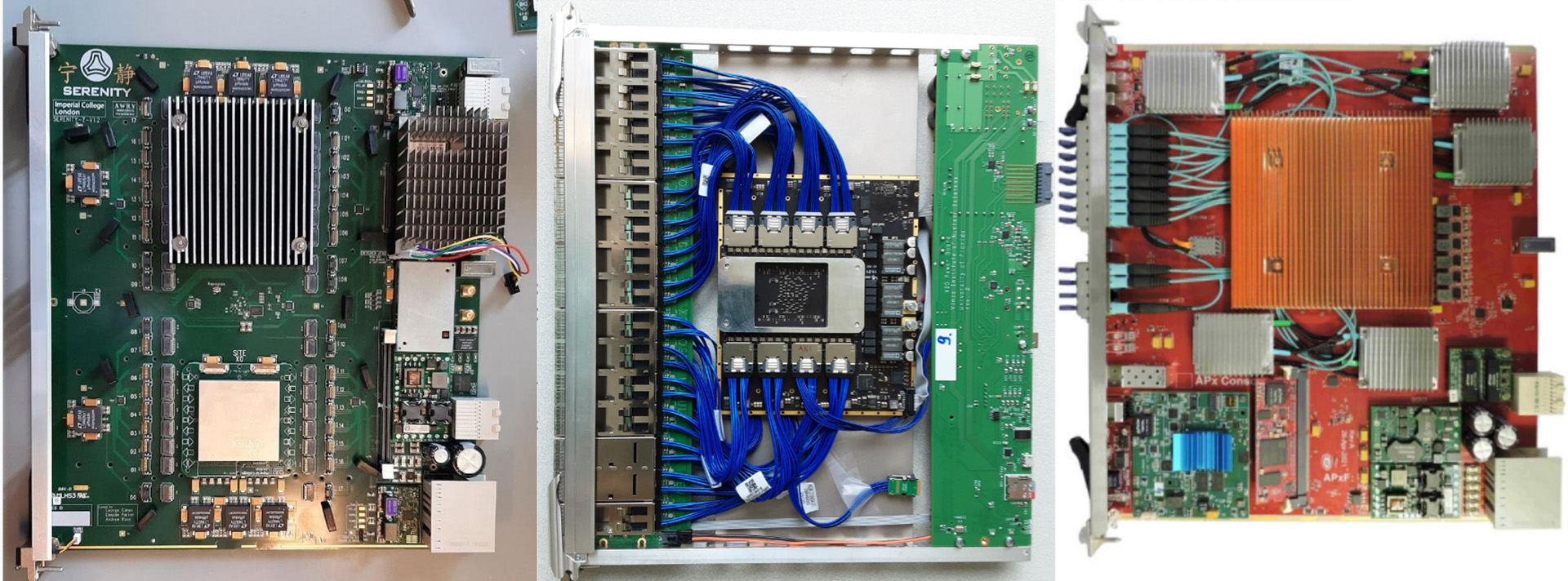
In This Section
CMU's Physics Department Joins CERN Trigger Project
By Heidi Opdyke Email Heidi Opdyke
- Associate Dean of Marketing and Communications, MCS
- Email opdyke@andrew.cmu.edu
- Phone 412-268-9982
Experiments at CERN's Large Hadron Collider (LHC) generate enormous amounts of data rapidly when particles collide at extremely high speeds. Detectors used in the LHC's Compact Muon Solenoid (CMS) experiment capture 3D images of the impacts at the rate of one every 25 nanoseconds or 40 million images a second.
"We don't have the capability to save all of the information, so we need an online mechanism to decide if images are interesting or not," said Carnegie Mellon University Assistant Professor of Physics Matteo Cremonesi. The CMS experiment employs an real-time data filtering system called the "trigger."
Cremonesi recently led an effort for Carnegie Mellon to formally join the CMS Trigger and Data Acquisition System project, known as TriDAS. Triggers have been the focus of his research since arriving at Carnegie Mellon in 2022.
"This is very challenging online processing that we do. It's one of the most challenging real-time applications on Earth," Cremonesi said.
The CMS experiments use two levels of triggers. The first level (called "Level-1") runs in sync with particle bunches colliding in the detectors. It uses a combination of algorithms that save information on collisions with characteristics of interest. The Level-1 trigger makes decisions in less than 10 microseconds, 1/1,000 the time it takes to blink an eye. A second level trigger (called "High-Level") then reviews that data and filters it further.
"Out of those initial 40 million images taken a second, on average 1,200 images are saved, or less than 0.003%," Cremonesi said.
As part of TriDAS, Cremonesi is working on the CMS Level-1 Trigger. His work is supported by the Next Generation Triggers (NextGen) project and complements what his Carnegie Mellon colleagues are doing with hardware.

Professor Manfred Paulini, along with Assistant Professors John Alison, Matteo Cremonesi and Valentina Dutta, are building and testing 5,000 20-centimeter hexagonal electronics modules at Carnegie Mellon's module assembly center for a High-Granularity Calorimeter (HGCAL) upgrade to the CMS detectors. The upgrade will enhance the quality of the recorded data as well as cope with large amounts of ionizing radiation.
Cremonesi and other scientists are preparing for the anticipated flood of information by this new detector through using machine learning (ML) algorithms deployed on field-programmable gate arrays (FPGAs).
"This work opens more opportunities for students and postdocs. We currently have two doctoral students, Kyungmin Park and Sena Durgut, and one postdoc, Peter Meiring, working on the Level-1 Trigger as part of TriDAS," Cremonesi said.
By using specialized chips like FPGAs to accelerate ML inference, ML algorithms can be used in real-time in the Level-1 Trigger, allowing for a more accurate reconstruction of the data produced by the HGCAL.
"This is where the boundary between hardware, software and electrical engineering meet," Cremonesi said.
Cremonesi started working with the CMS experiment in 2015 while he was a postdoctoral researcher at Fermi National Accelerator Laboratory in Chicago. He specialized in computing operations, software development, and applied AI. For much of his work he evaluated existing data science tools used by companies such as Facebook and Google to find new applications to physics.
"I managed a team that tried to popularize the utilization of industry standard tools for data analysis, which could speed up the way we do our research," he said.
The NextGen project also has ties to Google. Former Google CEO Eric Schmidt visited CERN in 2022, which led to an agreement with the Eric and Wendy Schmidt Fund for Strategic Innovation to fund a project that would pave the way for the future trigger systems at the LHC and beyond.